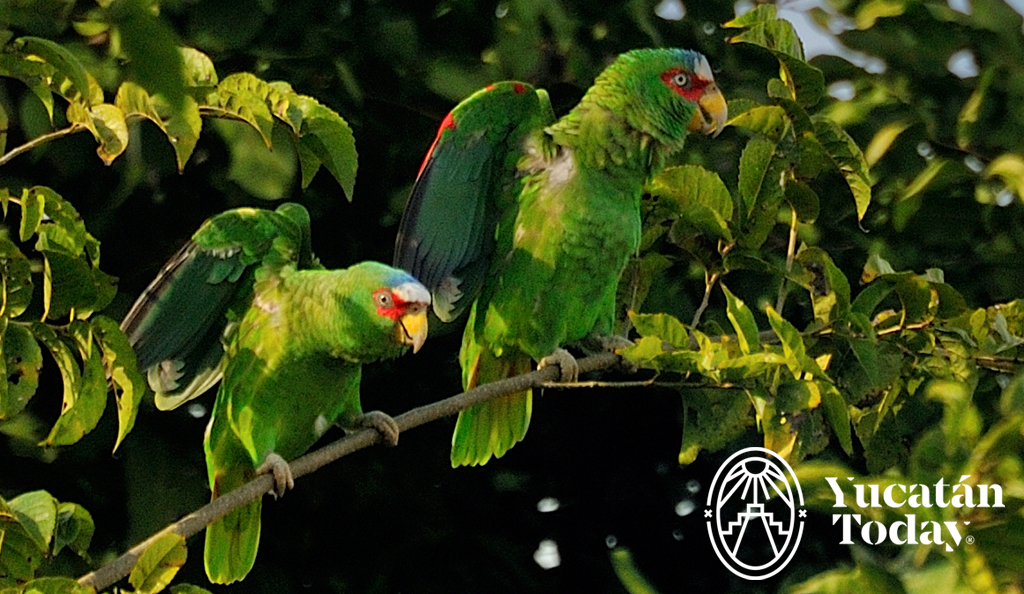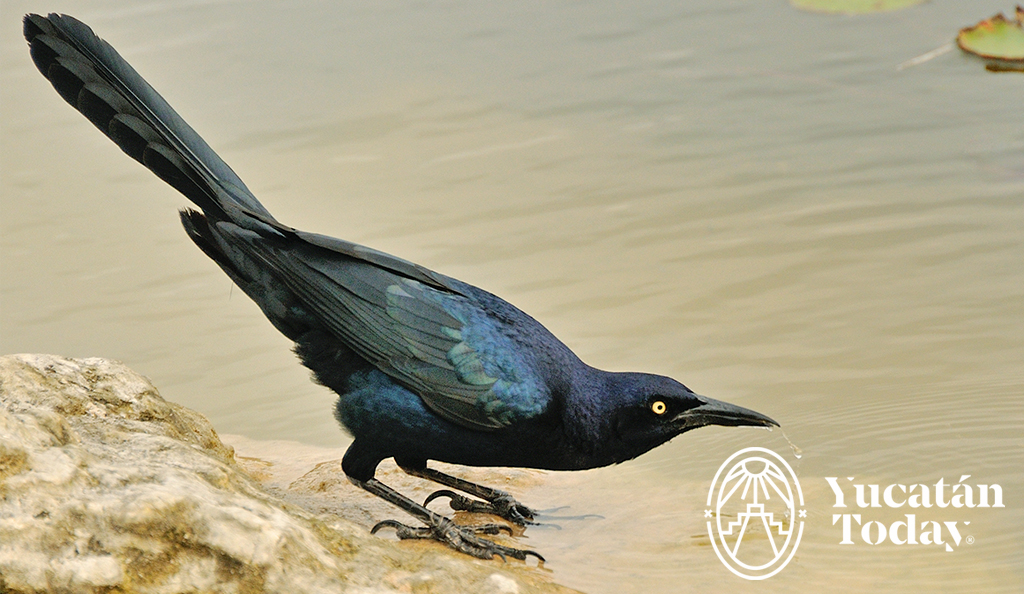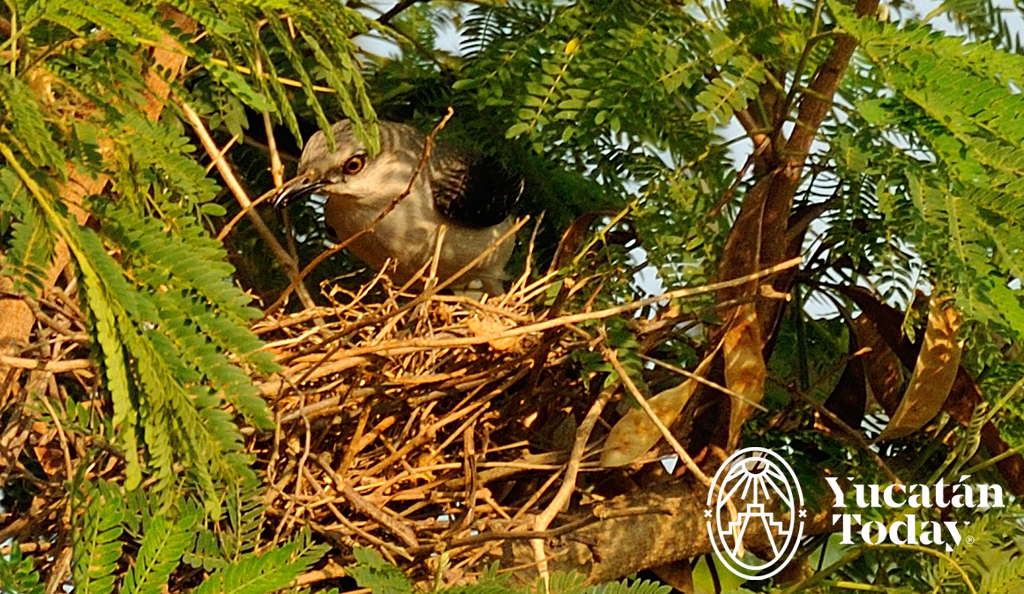
Cherie’s Bird of the Month: White-fronted Parrot
Ack! Ack! Ack! Contact calls of 49 White-fronted Parrots filled the sunset on Nov. 20, as the flock flew south over Colonia Santiago, a neighborhood of Mérida, Yucatán. I heard them coming, but I never expected to see that size flock in the city. Until this year, I’d spotted only 19; others had seen 24. Tourists and residents can see and hear them during the parrots’ morning or evening travels as they fly over Paseo de Montejo and the many colonias of Mérida.
Don’t those calls lend authenticity to a tropical experience? Unlike its larger cousin, the Scarlet Macaw, the White-fronted Parrot lacks long tail feathers in flight. Instead, the short tail looks squared off by a machete. When I watch them fly, their choppy wing beats look as if they are arthritic.
At night, the silent parrot flock nestles in the foliage in their communal roost trees. At daybreak, they fly to more exposed trees and begin their loud morning chorus. Maybe they share locations of feeding areas during their vocal gathering. Then the large flock divides into smaller flocks in different directions to go feed for the day. This noisy species ranges from Mexico to NW Costa Rica and seems to prefer forest canopies, mangroves, semi-open patches of forest, savannas, and farming areas.
As herbivores, they especially feed on seeds and fruit. Sexes don’t look alike which is an uncommon trait among most Amazona parrots. Both sexes sport that cauliflower-like white forehead and are about a foot in length, but only the male has red on its wings. Scientists believe that White-fronted Parrot pairs are monogamous and may remain together for life. Mutual preening assists in maintaining the pair bond. Both the bill and fleshy tongue help clean feathers and keep the skin in good condition.
Of course, individuals also preen themselves. Pairs select cavities in trees or palms to nest. The female hatches two to five young after 25 days. Both parents provide care and the young depart in about three months. Although I’ve only referred to the White-fronted Parrot, “apparrotly” Mérida also has a flock of Red-lored Parrots that escaped from an aviary in 1988. Also, I documented the much larger Yellow-headed Parrot on Nov. 19, 2013.
Neither the Red-lored nor the Yellow-headed is indigenous to the Yucatán state and both are considered to be escapees. Happy Birding! Listen to the loud chorus: http://macaulaylibrary.org/audio/144901 http://macaulaylibrary.org/audio/8406
Nature's wonders inspire Cherie Pittillo, a nature photographer, zoologist, and author. Follow her friendly, feathered journey as she discovers the birds of the Yucatan Peninsula.
Read more about Yucatan Birds:

Author: Cherie Pittillo
Nature’s wonders inspire Cherie Pittillo, a nature photographer, zoologist, and author. Follow her friendly, feathered journey as she discovers the birds of the Yucatan Peninsula.
Receive the latest articles and much more from the best of Yucatán in your email!
Related articles

Cherie’s Bird of the Month: Great-tailed Grackle
Quiscalus mexicanus, X-kau (Maya) When I escaped to my parents’ winter home in Florida during college breaks, I enjoyed the whistles, clacks and...
Cherie's Bird of the Month: American Flamingo
Explore the vibrant world of the American Flamingo in Yucatán, from their unique diet to breeding habits.



